Charles Henry Corey | |
|---|---|
 | |
| Born | December 12, 1834 New Canaan, New Brunswick |
| Died | September 5, 1899 (aged 64) [1] |
| Spouse | Fannie Sanborn (1865 - 1899, his death) |
| Children | 2 |
Charles Henry Corey (1834-1899), was a Canadian Baptist clergyman.
Charles Henry Corey | |
|---|---|
 | |
| Born | December 12, 1834 New Canaan, New Brunswick |
| Died | September 5, 1899 (aged 64) [1] |
| Spouse | Fannie Sanborn (1865 - 1899, his death) |
| Children | 2 |
Charles Henry Corey (1834-1899), was a Canadian Baptist clergyman.
Corey was born at New Canaan, New Brunswick on 12 December 1834. He graduated from Acadia College in Wolfville, Nova Scotia in 1858, and from Newton Theological Seminary in 1861. He served as pastor of the First Baptist Church in Seabrook, New Hampshire from 1861 until the beginning of 1864, when he resigned to enter the service of the United States Christian Commission for the remainder of the United States Civil War. He previously accepted a commission with the USCC when he accompanied the 2nd New Hampshire Volunteer Regiment to Virginia in the summer of 1862. Following brief service in Texas and the Lower Mississippi, he served the remainder of the war in Morris Island and Charleston, South Carolina [2] Following the war, he was a missionary among the freedmen of South Carolina. In 1867 he was appointed principal of the Augusta Institute, Augusta, Georgia, which went on to become Morehouse College and the following year was transferred to Richmond, Virginia, as president of the Richmond Theological Institute for the training of African-American preachers and teachers. He retired in 1898 to Seabrook and died the following year of Bright's disease. [3]
In 1867, a Richmond campus of the National Theological Institute was established by Dr. Nathaniel Colver of the American Baptist Home Mission Society. [4] Colver died shortly thereafter, and the newly renamed Colver Institute was taken over by Corey. The school was renamed again as the Richmond Theological Seminary (also called Institute) which Charles Corey headed for 30 years. [5] In the 1890s, Corey was instrumental in the merging of the Richmond Theological Seminary with the Wayland Seminary to form Virginia Union University. In 1895, Corey wrote a history of the school. He retired in 1898. [5] The L. Douglas Wilder Library and Learning Resource Center holds the records of the Richmond Theological Seminary which includes Corey's personal and business correspondence. [4]
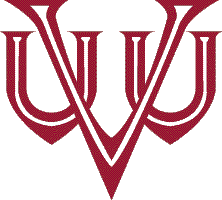
Virginia Union University is a private historically black Baptist university in Richmond, Virginia. It is affiliated with the American Baptist Churches USA.

Union Presbyterian Seminary is a Presbyterian seminary in Richmond, Virginia. It also has a non-residential campus in Charlotte, North Carolina, and an online blended learning program.

Francis Harrison Pierpont, called the "Father of West Virginia," was an American lawyer and politician who achieved prominence during the American Civil War. During the conflict's first two years, Pierpont served as Governor of the Restored Government of Virginia and, in this capacity, administered the part of Virginia then under Unionist control before West Virginia's admission to the Union as a separate state. After recognizing the creation of West Virginia, Pierpont continued to serve as Governor of the Restored Government. However, the degree of civil authority he could exercise was minimal for the remainder of the war. Having claimed to be the legitimate Governor of Virginia for the duration of the conflict, Pierpont assumed civil control of the state's entire post-1863 territory following the dissolution of the Confederacy and continued to serve as Governor during the early years of Reconstruction.
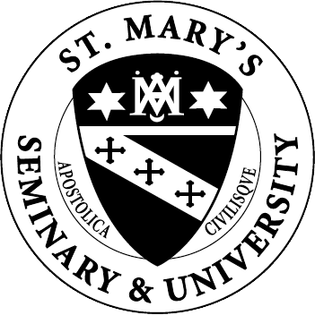
St. Mary's Seminary and University is a Catholic seminary located within the Archdiocese of Baltimore in Baltimore, Maryland; it was the first seminary founded in the United States after the Revolution and has been run since its founding by the Society of the Priests of Saint Sulpice.

Robert Lewis Dabney was an American Christian theologian, Southern Presbyterian pastor, Confederate States Army chaplain, and architect. He was also chief of staff and biographer to Stonewall Jackson. His biography of Jackson remains in print today.

Charles Porterfield Krauth was a pastor, theologian and educator in the Lutheran branch of Christianity. He is a leading figure in the revival of the Lutheran Confessions connected to Neo-Lutheranism in the United States.

Charles Coolidge Haight was an American architect who practiced in New York City. He designed most of the buildings at Columbia College's now-demolished old campus on Madison Avenue, and designed numerous buildings at Yale University, many of which have survived. He designed the master plan and many of the buildings on the campus of the General Theological Seminary in Chelsea, New York, most of which have survived. Haight's architectural drawings and photographs are held in the Dept. of Drawings and Archives at the Avery Architectural and Fine Arts Library at Columbia University in New York City.
Wayland Seminary was the Washington, D.C. school of the National Theological Institute. The institute was established beginning in 1865 by the American Baptist Home Mission Society (ABHMS). At first designed primarily for providing education and training for African-American freedmen to enter into the ministry, it expanded its offerings to meet the educational demands of the former enslaved population. Just before the end of the 19th century it was merged with its sister institution, the Richmond Theological Seminary, to form the current Virginia Union University in Richmond.

The Old School–New School controversy was a schism of the Presbyterian Church in the United States of America which took place in 1837 and lasted for over 20 years. The Old School, led by Charles Hodge of Princeton Theological Seminary, was more conservative theologically and did not support the revival movement. It called for traditional Calvinist orthodoxy as outlined in the Westminster standards.
Richmond Theological Seminary (RTS) was a higher education institution in Richmond, Virginia, serving former slaves after the American Civil War. It had its beginnings in November 1865 when the American Baptist Home Mission Society (ABHMS) sponsored Joseph Getchell Binney a short-lived class in Richmond, VA for theological training of African-Americans.

Lumpkin's Jail, also known as "the Devil's half acre", was a holding facility, or slave jail, located in Richmond, Virginia, just three blocks from the state capitol building. More than five dozen firms traded in enslaved human beings within blocks of Richmond's Wall Street between 14th and 18th Streets between the 1830s and the end of the American Civil War. Its final and most notorious owner, Robert Lumpkin, bought and sold slaves throughout the South for well over twenty years, and Lumpkin's Jail became Richmond's largest slave-holding facility.
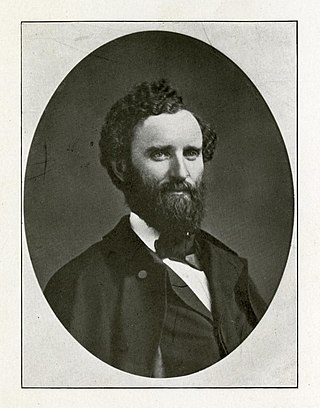
James B. Simmons, was a minister and abolitionist during the Antebellum period. He served as a Baptist minister in Providence, Rhode Island; Indianapolis, Indiana; Philadelphia, Pennsylvania; and New York City.
Charles Philip Krauth was a Lutheran clergyman of the United States. He was the first president of Gettysburg College 1834–1850.

Nathaniel Colver was an American Baptist clergyman.

Henry Sweetser Burrage was a United States clergyman, editor and author.

George Addison Baxter was an educator, American university administrator, theologian and author. He served as President of Washington and Lee University from 1799 to 1829 and Hampden–Sydney College from 1835 until his death.
Alexander White Pitzer (1834–1927) was an American Presbyterian clergyman. He was the author of several books on theology, and was a professor of biblical history and literature at Howard University.
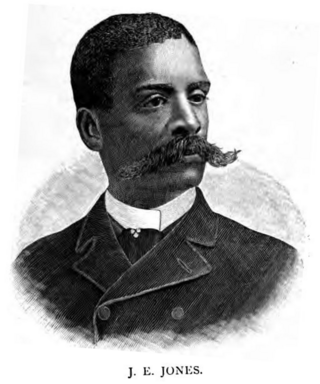
Joseph Endom Jones was an American Baptist minister and professor at the Richmond Theological Seminary and Virginia Union University in Richmond, Virginia from 1876 to 1922. He was a major leader in the Baptist Church among blacks in Virginia. His son, Eugene Kinckle Jones, was a leader in the National Urban League.
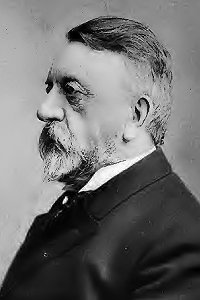
Henry Lyman Morehouse was a Baptist minister, hymns author and member of the American Baptist Home Mission Society of New York.
Rev. George Rice Hovey was an American university president, professor, minister, and author. He served as the President of Wayland Seminary from 1897 to 1899; and as the President of Virginia Union University (VUU) from 1904 to 1918. Hovey taught theology, Hebrew, New Testament Greek, and philosophy. In his late career he worked to create an extension course for Black ministers. He was also known as George Hovey Rice.
{{cite encyclopedia}}: Missing or empty |title= (help)